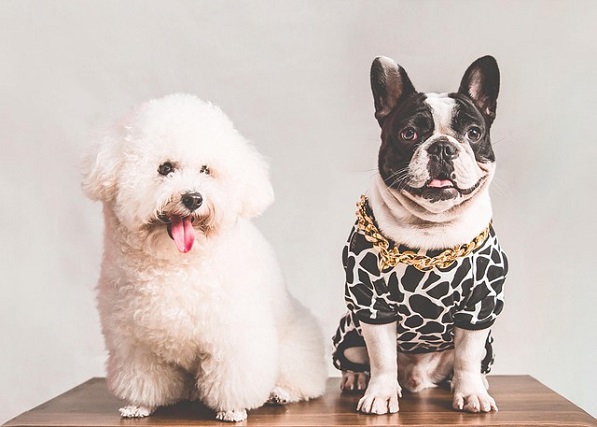Picture your once-vibrant red Corgi now sporting a patchy, washed-out coat—those iconic hues can lose intensity for surprising reasons. Let’s explore science-backed explanations with real pet parent stories, blending genetic insights and care tips for a clearer understanding.
Genetic factors play the primary role. My neighbor’s Corgi, Penny, was born with rich sable fur that lightened to pale tan by age two. "Many Corgis carry recessive genes for color dilution," her breeder explained. The "D locus" gene specifically weakens pigment, a trait common in Pembroke lines. When Penny’s parents both carried this gene, her coat naturally faded as she grew.
Aging naturally fades coat color. At eight, my Corgi Max’s black saddle turned gray—"Melanin production declines with age, similar to human gray hair," my vet said. Senior Corgis often develop "salt and pepper" patterns, especially around the face and legs. Max’s muzzle began whitening at six, a gradual change that accelerated as he entered his golden years.
Sun exposure bleaches fur over time. Penny’s back fur lightened after daily yard time in Florida—"UV rays break down melanin in hair shafts," our groomer noted. In Australia, where sun intensity is high, vets recommend pet-safe sunscreen for outdoor dogs. Penny now wears a lightweight vest during midday walks, reducing further fading.
Dietary deficiencies impact pigmentation. When I fed Max generic kibble, his coat lost its rich red hue—"Lack of tyrosine (an amino acid) reduces melanin production," a nutritionist warned. Switching to AAFCO-certified food with salmon oil restored his color within three months. Now I include small amounts of cooked chicken, a natural tyrosine source, in his meals.
Hormonal changes during pregnancy affect coat color. A client’s Corgi, Bella, saw her coat fade while nursing—"Fluctuating estrogen levels disrupt hair follicle pigmentation," her vet explained. Bella’s deep red coat returned six months after weaning her puppies. For nursing moms, adding omega-3 supplements can help maintain coat health.

Skin conditions like dermatitis cause color loss. Max developed red patches and patchy fading—"Inflammation from allergies damages pigment cells," a dermatologist vet said. Medicated baths and a hypoallergenic diet cleared the issue. In the EU, vets must diagnose skin conditions before prescribing steroids, ensuring proper care.
Environmental toxins contribute to fading. Bella’s coat lightened after her family moved near an industrial area—"Airborne pollutants interfere with melanin synthesis," a study shows. Using a home air purifier and filtered water helped reverse the fade. In areas with poor air quality, limiting outdoor time during peak pollution hours is advised.
Grooming practices matter. Using human shampoo on Penny stripped her fur’s natural oils—"Alkaline pH damages pigment molecules," our groomer explained. Switching to a pH-balanced dog shampoo with coconut oil preserved her color. Always check labels for EU-certified, cruelty-free products to align with animal welfare standards.
Seasonal changes trigger temporary fading. Every summer, Max’s coat looked paler—"Shorter daylight hours in winter reduce melanin production," my vet said. His color naturally deepened as daylight lengthened in spring. This cyclic fading is common in double-coated breeds like Corgis.
Rare genetic disorders like vitiligo cause patchy fading. A rescue Corgi at our local shelter developed white spots—"Autoimmune responses destroy pigment cells," the shelter vet explained. While incurable, regular moisturizing and a stress-reducing routine improved his skin health. Vitiligo is more prevalent in certain bloodlines.
Thyroid conditions in seniors affect coat color. At ten, Max’s hypothyroidism caused his coat to lighten—"Low thyroid hormones slow melanin production," a geriatric vet said. Levothyroxine medication not only boosted his energy but also restored his coat’s vibrancy within months. Annual blood tests are key for early detection.
Local pet care regulations apply. In California, using unapproved coloring products is illegal; in the UK, breed standards frown on excessive fading. "Stick to natural solutions like proper nutrition and grooming to stay compliant," a lawyer friend reminds me. Avoiding chemical treatments protects both your Corgi’s health and legal standing.
Preventive measures for Corgis. Feed a balanced diet with tyrosine-rich foods (chicken, fish) and omega-3s—"Nutrition is foundational for coat health," my nutritionist says. Limit sun exposure during peak hours and use pet-safe UV protectants. Regular grooming with breed-appropriate tools removes dead hair and distributes natural oils.
Understanding Corgi coat fade requires patience and observation. For Penny, it was genetics; for Max, a combination of age and nutrition. "Track changes and consult your vet for sudden fading," my breeder advises. With proper care, your Corgi’s coat can retain its beauty through every life stage, reflecting both their health and your attentive care.






